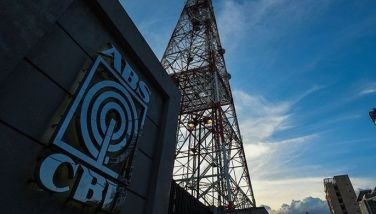Oct imports up 7% to $3.15-B
December 20, 2003 | 12:00am
The country’s merchandise imports rose by seven percent to $3.154 billion in October from $2.946 billion in the same period last year, possibly signaling a resurgence in economic activity in the last quarter of 2003, analysts said yesterday.
The government statistics office attributed much of the recovery in imports to higher inflows of electronic components used in manufacturing electronic products which make up more than half of the country’s exports.
"Higher imports in October of electronics parts point to stronger shipments in coming months," analysts said.
But they said there were concerns the Philippines was being left behind by a rebound in exports in the region.
"The issue in the Philippines is there has been very little investment in the export sector," said Michael Spencer, chief economist at Deutsche Bank in Hong Kong. "Everybody else is picking up and the Philippines is picking up very slowly."
He said the latest trade data backed evidence that the country may be falling behind as Asian competitors take advantage of a global economic recovery.
For the first 10 months of the year, the country incurred a trade shortfall of $1.617 billion, nearly four times the gap of $424 million in the same period of 2002.
October’s monthly surplus of $69 million was less than the surplus of $218 million in September and the $87 million a year earlier. The figures are not seasonally adjusted.
"It’s mildly positive because of the trade surplus for the month," said Jojo Gonzales, managing director of Philippine Equity Partners. "We only had three surpluses in the first nine months of the year."
The government statistics office said electronics parts made up 47.4 percent of the total import bill for October at $1.496 billion. This was 4.3 percent higher than the $1.434 billion in September and up 8.9 percent from the $1.374 billion of a year earlier.
Beyond electronics parts, the Philippines imports nearly all of its crude oil, industrial machinery, transportation equipment, rice and sugar.
The weakness of the peso against the dollar has made these imported goods more expensive.
The local currency has been hurt by an attempted coup in July, the resignation of Jose Isidro Camacho as finance secretary in November and political uncertainty ahead of the country’s elections next May.
Earlier, the NSO said exports rose 6.2 percent to $3.223 billion in October from $3.033 billion a year earlier as the country benefited from the pick-up in the United States, Japan, Hong Kong and its other major markets.
Electronics, which make up two-thirds of total exports, were up 6.3 percent in October on a year earlier – the highest rise seen this year.
Other key Philippine exports are textiles, clothing, coconut oil, furniture and tropical fruit.
Japan was the biggest source of imports in October, accounting for $688.25 million or 21.8 percent of total. Other major sources were the US, Singapore and South Korea.
Socioeconomic Planning Secretary Romulo Neri has forecast the economy – also helped by dollars sent home each year by overseas workers – would be 5.2 percent larger next year than in 2003, due to better exports and farm output.
The government expects 2003 to show growth of 4.2 percent, higher than the 3.9 percent seen by many economists. In 2002, the economy was up 4.4 percent on the previous year.
The government statistics office attributed much of the recovery in imports to higher inflows of electronic components used in manufacturing electronic products which make up more than half of the country’s exports.
"Higher imports in October of electronics parts point to stronger shipments in coming months," analysts said.
But they said there were concerns the Philippines was being left behind by a rebound in exports in the region.
"The issue in the Philippines is there has been very little investment in the export sector," said Michael Spencer, chief economist at Deutsche Bank in Hong Kong. "Everybody else is picking up and the Philippines is picking up very slowly."
He said the latest trade data backed evidence that the country may be falling behind as Asian competitors take advantage of a global economic recovery.
For the first 10 months of the year, the country incurred a trade shortfall of $1.617 billion, nearly four times the gap of $424 million in the same period of 2002.
October’s monthly surplus of $69 million was less than the surplus of $218 million in September and the $87 million a year earlier. The figures are not seasonally adjusted.
"It’s mildly positive because of the trade surplus for the month," said Jojo Gonzales, managing director of Philippine Equity Partners. "We only had three surpluses in the first nine months of the year."
The government statistics office said electronics parts made up 47.4 percent of the total import bill for October at $1.496 billion. This was 4.3 percent higher than the $1.434 billion in September and up 8.9 percent from the $1.374 billion of a year earlier.
Beyond electronics parts, the Philippines imports nearly all of its crude oil, industrial machinery, transportation equipment, rice and sugar.
The weakness of the peso against the dollar has made these imported goods more expensive.
The local currency has been hurt by an attempted coup in July, the resignation of Jose Isidro Camacho as finance secretary in November and political uncertainty ahead of the country’s elections next May.
Earlier, the NSO said exports rose 6.2 percent to $3.223 billion in October from $3.033 billion a year earlier as the country benefited from the pick-up in the United States, Japan, Hong Kong and its other major markets.
Electronics, which make up two-thirds of total exports, were up 6.3 percent in October on a year earlier – the highest rise seen this year.
Other key Philippine exports are textiles, clothing, coconut oil, furniture and tropical fruit.
Japan was the biggest source of imports in October, accounting for $688.25 million or 21.8 percent of total. Other major sources were the US, Singapore and South Korea.
Socioeconomic Planning Secretary Romulo Neri has forecast the economy – also helped by dollars sent home each year by overseas workers – would be 5.2 percent larger next year than in 2003, due to better exports and farm output.
The government expects 2003 to show growth of 4.2 percent, higher than the 3.9 percent seen by many economists. In 2002, the economy was up 4.4 percent on the previous year.
BrandSpace Articles
<
>
- Latest
- Trending
Trending
Latest
Trending
Latest
Recommended




























